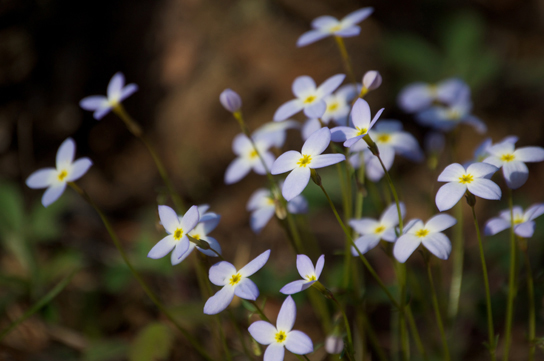| << Chapter < Page | Chapter >> Page > |
Phototropism—the directional bending of a plant toward or away from a light source—is a response to blue wavelengths of light. Positive phototropism is growth towards a light source ( [link] ), while negative phototropism (also called skototropism) is growth away from light.
The aptly-named phototropins are protein-based receptors responsible for mediating the phototropic response. Like all plant photoreceptors, phototropins consist of a protein portion and a light-absorbing portion, called the chromophore. In phototropins, the chromophore is a covalently-bound molecule of flavin; hence, phototropins belong to a class of proteins called flavoproteins.
Other responses under the control of phototropins are leaf opening and closing, chloroplast movement, and the opening of stomata. However, of all responses controlled by phototropins, phototropism has been studied the longest and is the best understood.
In their 1880 treatise The Power of Movements in Plants , Charles Darwin and his son Francis first described phototropism as the bending of seedlings toward light. Darwin observed that light was perceived by the tip of the plant (the apical meristem), but that the response (bending) took place in a different part of the plant. They concluded that the signal had to travel from the apical meristem to the base of the plant.

In 1913, Peter Boysen-Jensen demonstrated that a chemical signal produced in the plant tip was responsible for the bending at the base. He cut off the tip of a seedling, covered the cut section with a layer of gelatin, and then replaced the tip. The seedling bent toward the light when illuminated. However, when impermeable mica flakes were inserted between the tip and the cut base, the seedling did not bend. A refinement of the experiment showed that the signal traveled on the shaded side of the seedling. When the mica plate was inserted on the illuminated side, the plant did bend towards the light. Therefore, the chemical signal was a growth stimulant because the phototropic response involved faster cell elongation on the shaded side than on the illuminated side. We now know that as light passes through a plant stem, it is diffracted and generates phototropin activation across the stem. Most activation occurs on the lit side, causing the plant hormone indole acetic acid (IAA) to accumulate on the shaded side. Stem cells elongate under influence of IAA.
Cryptochromes are another class of blue-light absorbing photoreceptors that also contain a flavin-based chromophore. Cryptochromes set the plants 24-hour activity cycle, also know as its circadian rhythem, using blue light cues. There is some evidence that cryptochromes work together with phototropins to mediate the phototropic response.
Use the navigation menu in the left panel of this website to view images of plants in motion.
Whether or not they germinate in the light or in total darkness, shoots usually sprout up from the ground, and roots grow downward into the ground. A plant laid on its side in the dark will send shoots upward when given enough time. Gravitropism ensures that roots grow into the soil and that shoots grow toward sunlight. Growth of the shoot apical tip upward is called negative gravitropism , whereas growth of the roots downward is called positive gravitropism .

Notification Switch
Would you like to follow the 'Biology' conversation and receive update notifications?